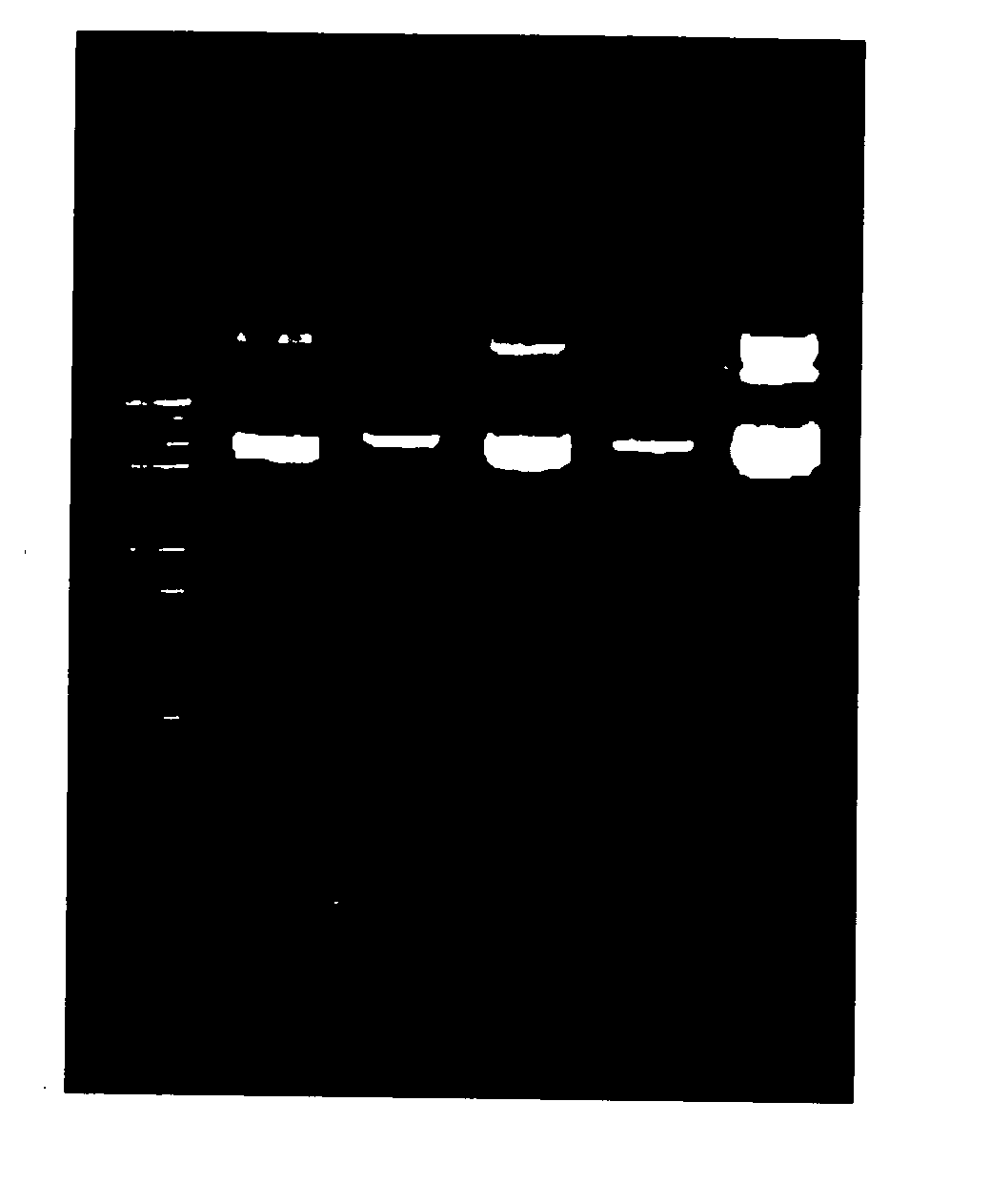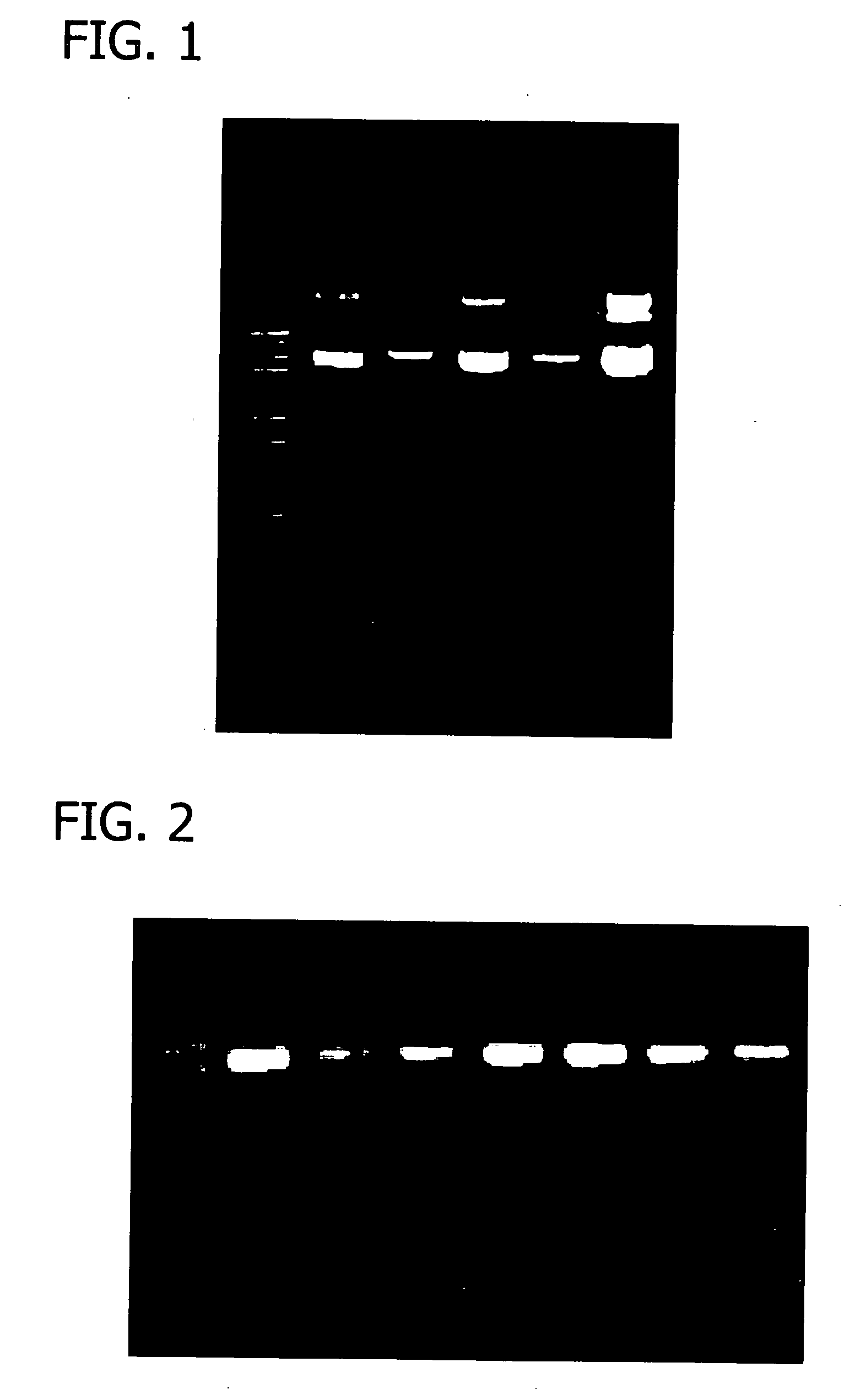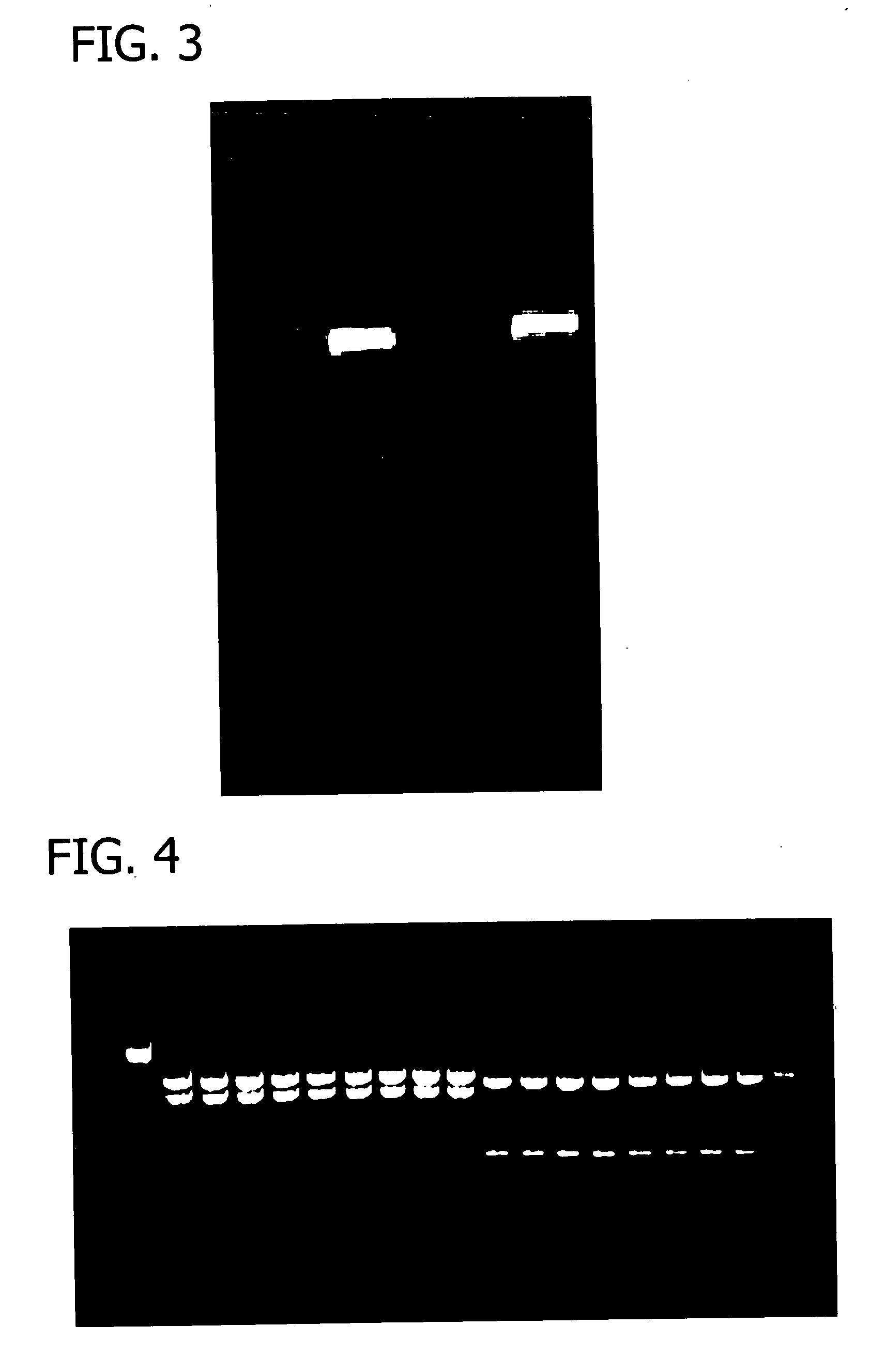Rapid preparation of nucleic acids by enzymatic digestion
- Summary
- Abstract
- Description
- Claims
- Application Information
AI Technical Summary
Benefits of technology
Problems solved by technology
Method used
Image
Examples
example 1
[0058] This Example provides a general preparation of plasmid DNA directly from bacterial culture.
[0059] Step 1: Add Extraction Enzyme Solution comprising 50 mM Tris-HCl, pH 8.0, 200 mM EDTA, 5% Triton X-100, 10 mg / ml RNase A and 20 mg / ml Lysozyme (about 0.1 volume of the culture) to a bacterial culture in a tube, a well, or a DNA purification column and mix briefly for under 10 seconds by pipetting up and down, or inversion, or vortex. Incubate at room temperature for 1-2 minutes.
[0060] Step 2: Add binding solution (40% isopropanol, 1.8 M guanidine thiocyanate and 1.0 sodium chloride), about one volume of the culture, and mix briefly by pipetting up and down or inversion. Transfer the mixture into a DNA purification column and bind DNA to a matrix by centrifugation for 30 seconds at maximum speed or by vacuum filtration. The DNA binding column utilized for these experiments consisted of a plastic column (1.209 inches long, 0.508 inches in diameter on top and 0.165 inches in diame...
example 2
[0063] This Example isolates and purifies plasmid DNA directly from overnight culture, utilizing a variety of enzyme solutions, and shows the synergetic effects of utilizing an Extraction Enzyme Solution comprising a lysozyme, a ribonuclease, a metal chelator, and a non-ionic detergent on plasmid DNA recovery.
[0064]E. coli strain DH5α containing the plasmid pCMV-SPORTβgal (7.8 kb) was used for the plasmid preparation. In each case, a 200 μl aliquot of overnight culture in LB broth (OD600=3.0) was loaded into a mini spin column packed with two layers of Ahlstrom glass filter paper Grade 121 and one layer of Ahlstrom glass filter paper Grade 151 (on bottom). To the overnight culture 20 μl of an enzyme solution was added and the mixture was incubated at room temperature for up to 2 minutes. The following enzyme solutions were used:
Enzyme Solution 150 mM Tris-HCl, pH 8.0,200 mM EDTA,5% Triton X-100,10 mg / ml RNase AEnzyme Solution 250 mM Tris-HCl, pH 8.0,200 mM EDTA,5% Triton X-100,10...
example 3
[0067] This Example shows the synergetic effects of utilizing an Extraction Enzyme Solution comprising a lysozyme, a ribonuclease, a metal chelator, and a non-ionic detergent on plasmid DNA recovery.
[0068] A 350 μl aliquot of overnight culture in LB broth (OD600=3.3) of E. coli DH5α containing the plasmid pCMV-SPORT-βgal was loaded into a mini spin column of the same type as in Example 2. The culture was then lysed with 35 μl of an enzyme solution for 2 minutes at room temperature. The following enzyme solutions were used:
Enzyme Solution 125 mM Sodium Acetate, pH 4.5,10 mg / ml RNase A,30 mg / ml LysozymeEnzyme Solution 225 mM Sodium Acetate, pH 4.5,5% Triton X-100,10 mg / ml RNase A,30 mg / ml LysozymeEnzyme Solution 325 mM Sodium Acetate, pH 4.5,5% Triton X-100,200 mM EDTA,10 mg / ml RNase A,30 mg / ml LysozymeEnzyme Solution 450 mM Tris-HCl, pH 8.0,5% Triton X-100,200 mM EDTA,10 mg / ml RNase A,30 mg / ml LysozymeEnzyme Solution 550 mM Tris-HCl, pH 8.0,200 mM EDTA,10 mg / ml RNase A,30 mg / ml Ly...
PUM
| Property | Measurement | Unit |
|---|---|---|
| Fraction | aaaaa | aaaaa |
| Fraction | aaaaa | aaaaa |
| Fraction | aaaaa | aaaaa |
Abstract
Description
Claims
Application Information
 Login to View More
Login to View More - R&D
- Intellectual Property
- Life Sciences
- Materials
- Tech Scout
- Unparalleled Data Quality
- Higher Quality Content
- 60% Fewer Hallucinations
Browse by: Latest US Patents, China's latest patents, Technical Efficacy Thesaurus, Application Domain, Technology Topic, Popular Technical Reports.
© 2025 PatSnap. All rights reserved.Legal|Privacy policy|Modern Slavery Act Transparency Statement|Sitemap|About US| Contact US: help@patsnap.com



